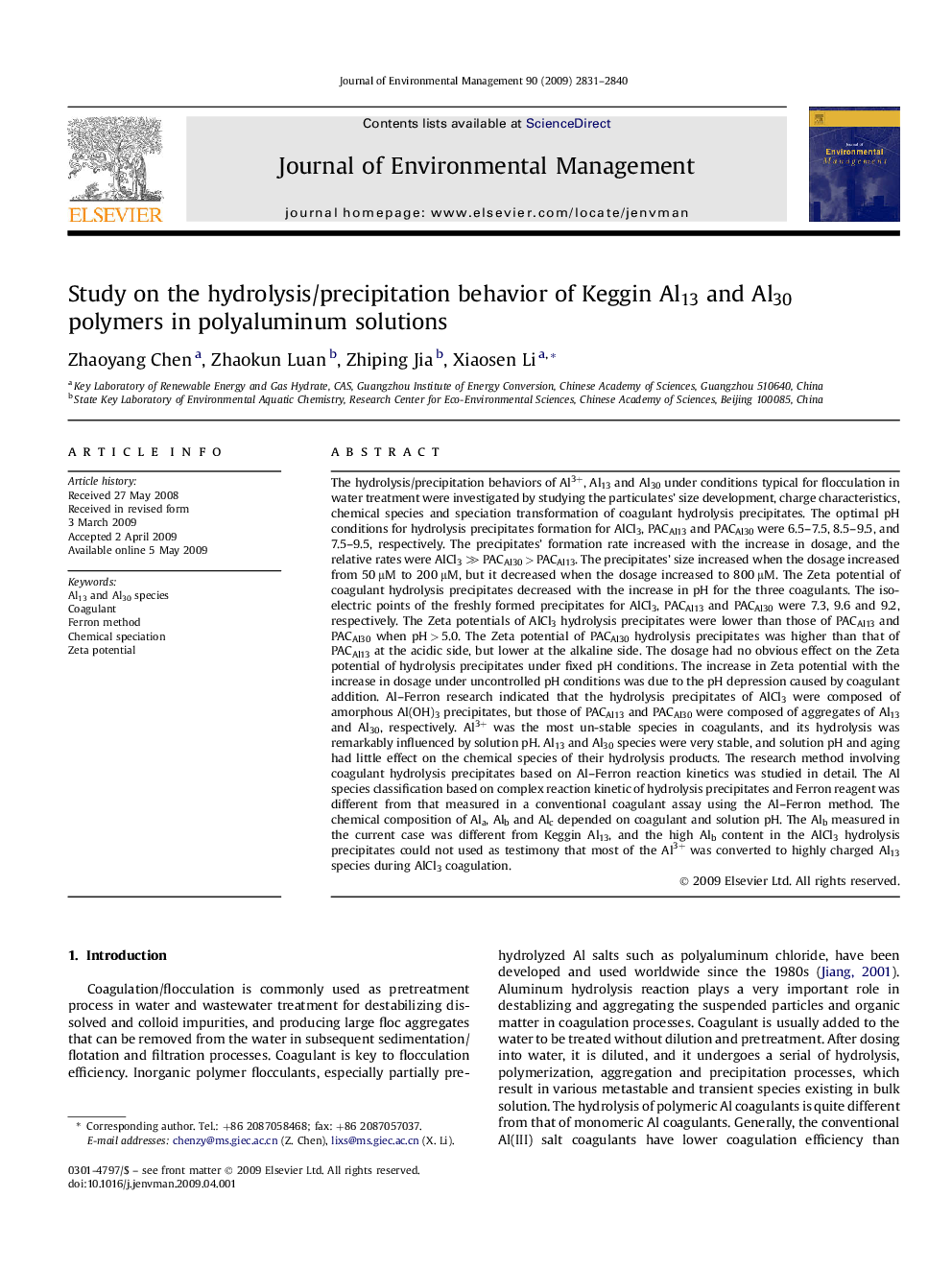| Article ID | Journal | Published Year | Pages | File Type |
|---|---|---|---|---|
| 1057784 | Journal of Environmental Management | 2009 | 10 Pages |
The hydrolysis/precipitation behaviors of Al3+, Al13 and Al30 under conditions typical for flocculation in water treatment were investigated by studying the particulates' size development, charge characteristics, chemical species and speciation transformation of coagulant hydrolysis precipitates. The optimal pH conditions for hydrolysis precipitates formation for AlCl3, PACAl13 and PACAl30 were 6.5–7.5, 8.5–9.5, and 7.5–9.5, respectively. The precipitates' formation rate increased with the increase in dosage, and the relative rates were AlCl3 ≫ PACAl30 > PACAl13. The precipitates' size increased when the dosage increased from 50 μM to 200 μM, but it decreased when the dosage increased to 800 μM. The Zeta potential of coagulant hydrolysis precipitates decreased with the increase in pH for the three coagulants. The iso-electric points of the freshly formed precipitates for AlCl3, PACAl13 and PACAl30 were 7.3, 9.6 and 9.2, respectively. The Zeta potentials of AlCl3 hydrolysis precipitates were lower than those of PACAl13 and PACAl30 when pH > 5.0. The Zeta potential of PACAl30 hydrolysis precipitates was higher than that of PACAl13 at the acidic side, but lower at the alkaline side. The dosage had no obvious effect on the Zeta potential of hydrolysis precipitates under fixed pH conditions. The increase in Zeta potential with the increase in dosage under uncontrolled pH conditions was due to the pH depression caused by coagulant addition. Al–Ferron research indicated that the hydrolysis precipitates of AlCl3 were composed of amorphous Al(OH)3 precipitates, but those of PACAl13 and PACAl30 were composed of aggregates of Al13 and Al30, respectively. Al3+ was the most un-stable species in coagulants, and its hydrolysis was remarkably influenced by solution pH. Al13 and Al30 species were very stable, and solution pH and aging had little effect on the chemical species of their hydrolysis products. The research method involving coagulant hydrolysis precipitates based on Al–Ferron reaction kinetics was studied in detail. The Al species classification based on complex reaction kinetic of hydrolysis precipitates and Ferron reagent was different from that measured in a conventional coagulant assay using the Al–Ferron method. The chemical composition of Ala, Alb and Alc depended on coagulant and solution pH. The Alb measured in the current case was different from Keggin Al13, and the high Alb content in the AlCl3 hydrolysis precipitates could not used as testimony that most of the Al3+ was converted to highly charged Al13 species during AlCl3 coagulation.
